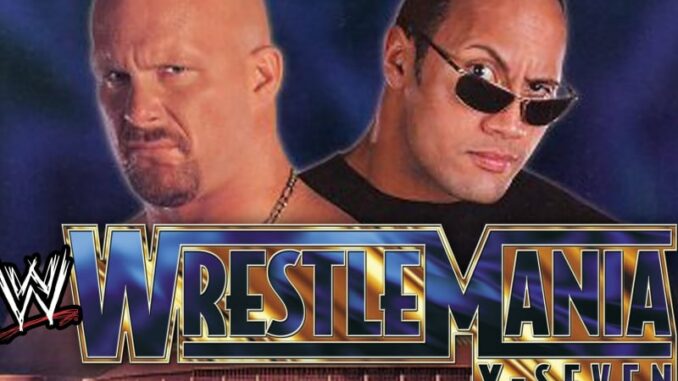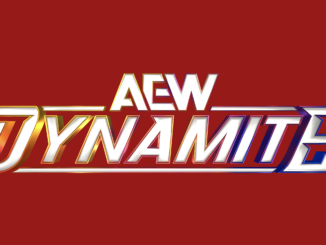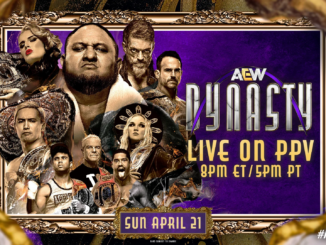
SPOTLIGHTED PODCAST ALERT (YOUR ARTICLE BEGINS A FEW INCHES DOWN)...
LeClair’s WrestleMania X-Seven Lookback
It’s Sunday afternoon and I’m in the bucket passenger seat of my dad’s boxy, teal work van. We’re driving across town to pick up my friend and his brother for the day’s and evening’s festivities. We pull into their driveway, my dad honks the car horn. They come billowing out of the garage, carrying snacks and backpacks, each filled with a mix of Monday’s school clothes and wrestling action figures. It’s April 1st, and it’s WrestleMania day.
We stop at the store down the street to pick up a few more items for our collection of junk food. I’ve recorded some songs from my stereo to a blank cassette (the van didn’t have a CD player.) I’ve filled both the A and B side, but only one song really matters today – “My Way” by Limp Bizkit, the iconic theme song for WrestleMania X-Seven.
My dad pulls into the carwash and pops some coins in. My friends and I haphazardly assist, ducking back in and then out of the car as the steady stream of water and soap permits. We’re still playing the song, singing along and posing like all our favorite wrestlers.
There’s a permanent nostalgia that I’ve attached to WrestleMania X-Seven. Perhaps it’s because it was the only one I got to watch live as a kid. While we often ordered Pay-Per-Views during the summer, it was hard to convince parents to let a bunch of rowdy pre-teen/teen boys stay up late on a school night, raid their pantries, AND pay $49.99 for the show on top of it. I’d like to think, though, that it’s more than just notalgia. Watching the show back in 2021 for the first time in many years, I can confidently say that it is.
It’s the nature of a wrestling fan to get excited for WrestleMania. Even at my lowest points of engagement, I’ll always start feeling that little twinge of excitement in my chest come March. It’s when my casual fan friends inevitably poke their hands out of the sand, too. “What’s so and so up to this year?” they’ll ask, or, “hey, how’s the Mania card looking?” Once it’s in your blood, you can’t help but feel it.
WrestleMania X-Seven came before I was a jaded fan. I had access to message boards, visited them frequently and participated in wide-ranging discussions, hoping to come off wiser and older than I actually was. I doubt I pulled it off, but man, did I have fun doing it.
I believe it to be a confluence of circumstance that makes this WrestleMania in particular stand out so boldly above the rest. Headlined by two of the biggest names in professional wrestling history, it served as a bookend to not only the true crux of their rivalry, but also to one of the most prolific, successful, and genre-bending periods pro wrestling has ever seen. The Attitude Era didn’t come to an official close on April 1st, 2001, but it certainly began to pen its epilogue.
There’s a marked importance to this show, from the opening bell of Chris Jericho’s Intercontinental title defense against William Regal, to the resounding final chairshot laid on The Rock by the newly-christened bad guy World Champion, Steve Austin. Every match carried weight, most due to excellent build in the weeks and months that preceded the show, but some due to stellar, last minute attention to detail. Even a seemingly throwaway six man tag placed second on the card felt larger than life because of the rousing promo Bradshaw delivered backstage.
It’s hard to come up with many other cards that feel quite as complete. There’s excellent wrestling (Kurt Angle vs. Chris Benoit), high-tension familiar drama (McMahon vs. McMahon), death-defying, original stunts (TLC II), comedy (Jericho vs. Regal’s story, gimmick battle royal), redemption (Chyna vs. Ivory), personal vendettas (Triple H vs. The Undertaker), and one of the biggest twists in pro wrestling history (Rock vs. Austin.) There’s a “big fight” feel – both in terms of aesthetics and execution. It’s the first WrestleMania to place heavy emphasis on the entrance stage, the massive pageantry of the football stadium, and the keen attention to crowd attendance. X-Seven served as the jumping off point for so many trends and traditions that would continue for years to come.
I’d be remiss if I didn’t mention the commentary. So much of a show’s drama comes from the appropriate delivery, timing, and execution of the team calling the matches. X-Seven is unique, in that it features Jim Ross paired with short-lived partner Paul Heyman, who had replaced Jerry Lawler the month prior. Heyman brought a legitimacy, a flair, and vibrancy to this show that would not have been present with Lawler in the booth. J.R. was sharp, witty, and wholly invested. Heyman was the perfect foil to his optimism. Both men seemed comfortable enough to let their chemistry shine, but still far too fresh in their pairing to show complacency.
As good as the show is, present day rewatches are expectedly sobered by the grim circumstances surrounding much of the show’s talent. I was particularly struck by the sadness I felt during the European Championship match between Eddie Guerrero and Test, both of whom passed away at tragically young ages in the midst of their pro wrestling careers. Though 2001 came well before Guerrero’s eventual peak, the flashes of what was to come are evident throughout he and Test’s bout. I was taken aback by Test’s athleticism and unrealized potential, and fondly recalled how much I enjoyed his character as a kid.
There’s a tremendous amount of positive hindsight, too. Chris Jericho’s career took off in a big way following his memorable opener. Edge’s infamous spear to Jeff Hardy from atop a ladder in TLC II is a highlight that lives and breathes even to this day, twenty years later. Triple H and the Undertaker, though firmly rooted in the main event scene, had yet to earn their stripes as legendary stalwarts and beacons of the company’s legacy. Kurt Angle’s career continued to soar in the months and years following X-Seven, albeit in a slightly different, more comedic light.
Of course, there’s the aforementioned heel turn in the main event. For most, it ranks only behind Hulk Hogan joining the N.W.O. in 1996. Stone Cold Steve Austin – perennial babyface and face of the company, fresh off his return from a nearly year long hiatus, joins forces with his arch-nemesis Vince McMahon to defeat The Rock and become World Champion. In hindsight, the signs were there. Austin had new music. He had a more aggressive demeanor. He told the Rock in an incredibly memorable locker-room sit down with Jim Ross that he had to beat him. Good twists, in any form of entertainment, come when the observant viewer is shocked in the moment, but identifies the seeds that were planted in hindsight. The best twists still get you when you revisit them years later. This turn still gets me. It’s the viciousness of Austin, the conniving glare from McMahon, and the absolute ghastly shock and disgust conveyed by Jim Ross. It’s chill-inducing, forever my favorite reaction to pro wrestling. It makes you feel something.
A lot can be said about the aftermath. Austin’s turn never really had room to breathe and solidify. Marred by the much maligned invasion angle, Stone Cold would find himself playing second fiddle to authority figures, engaging in over-the-top comedy unbecoming of the company’s top heel (or babyface) and would wind up becoming the old Stone Cold again by year’s end. For their part, the McMahons were forced to flip-flop roles within months to accommodate the shoe-horned WWF vs. WCW story. Unfortunately, much of what was set in motion during WrestleMania X-Seven was either indefinitely paused, or scrapped altogether after WCW’s presence on the show came into focus. Even still, it’s a snapshot of professional wrestling near-perfection, if only for one night.
I still remember the excitement of hearing Chris Jericho’s theme kick off the show. I remember being completely enamored by the multi-layered story-telling in the McMahon family saga. I remember being at odds with my friends – wanting so badly for Edge and Christian to come out on top in TLC II, while they cheered mightily for the Hardys. I recall us putting those differences aside to cheer on our mutual hero, Steve Austin. I vividly recall the genuine shock as we watched Vince McMahon hand Steve the steel chair. We, like the crowd that night in Houston, were dumbfounded and shocked, but somehow still elated that our guy would come out on top. I remember the closing video recap, adrenaline pumping through all of us as we tried so hard to wind down and prepare for bed. The next morning, we’d get up, pile back into the same teal mini-van and blast “My Way” again, still riding high from the night before.
I don’t listen to the song often, or really at all these days. But, when I hear it, I think about this show. Without fail, it transports me back in time to that old van, to my old friends, and to the TV we huddled around to anticipate every moment of action. It’s not just a memory, but a feeling altogether. Twenty years on, even jaded by life and circumstance, it still evokes the same reaction. It reminds me of a time where pro wrestling was perfect to me. I hope you have a WrestleMania X-Seven, too.




Leave a Reply
You must be logged in to post a comment.